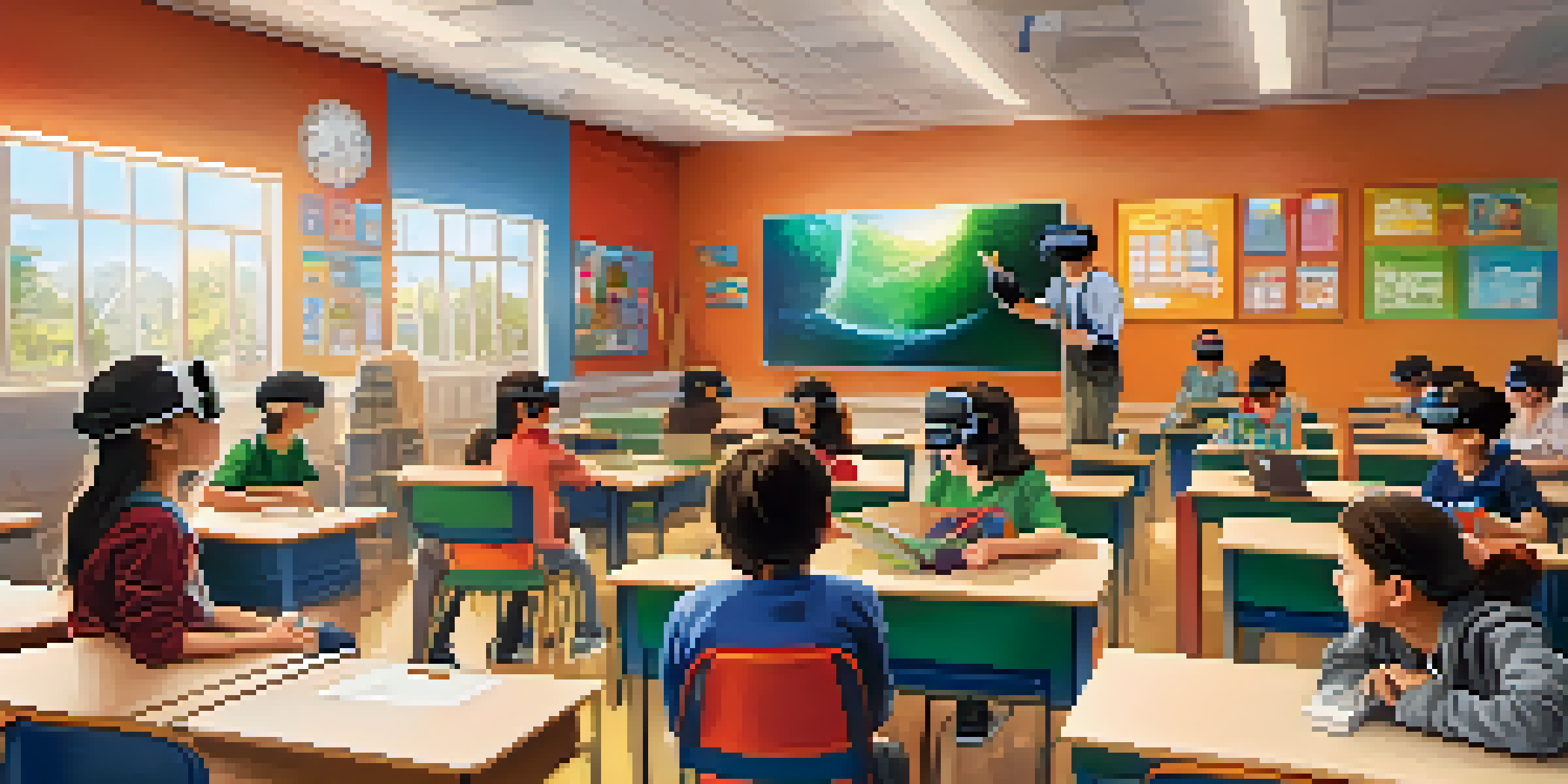Impact of Technology on Utah's Educational Institutions Today

The Rise of Online Learning Platforms in Utah
The shift to online learning platforms has transformed education in Utah, providing students with unprecedented access to resources. From K-12 to higher education, institutions have adopted digital tools to enhance learning experiences. For instance, platforms like Canvas and Blackboard have become central to course management, allowing teachers to upload materials and track student progress efficiently.
Education is the most powerful weapon which you can use to change the world.
This online transition has not only made education more accessible but also tailored it to individual learning styles. Students can learn at their own pace, revisit lectures, and engage with interactive content, making education more personalized. Furthermore, these platforms encourage collaboration among peers, fostering a sense of community even in virtual classrooms.
As a result, educational institutions in Utah are embracing a blended learning model, combining face-to-face instruction with online elements. This hybrid approach has proven effective, especially during the COVID-19 pandemic, and is likely to remain a staple in Utah's educational landscape.
Incorporating Advanced Technologies in Classrooms
Utah schools are increasingly incorporating advanced technologies, such as artificial intelligence (AI) and virtual reality (VR), into their curricula. These technologies provide immersive learning experiences that traditional methods simply can't match. For example, students can take virtual field trips to historical sites or interact with 3D models of complex scientific concepts, enhancing their understanding and retention of the material.

Moreover, AI-driven tools can analyze student performance data, helping educators identify areas where students may struggle. This allows for timely interventions and personalized support, ensuring that no student is left behind. By leveraging technology, Utah's educators are better equipped to meet diverse learning needs and promote academic success.
Online Learning Transforms Education
Utah's shift to online learning platforms has enhanced accessibility and personalized education for students across various levels.
The adoption of these advanced technologies not only engages students but also prepares them for a tech-driven workforce. As industries increasingly rely on digital skills, integrating these tools into education ensures that Utah's students are well-equipped for future challenges.
The Role of Mobile Devices in Education
Mobile devices have become essential tools in Utah's educational institutions, enabling learning anytime, anywhere. With smartphones and tablets in hand, students can access a wealth of information and educational resources at their fingertips. This convenience encourages independent learning and research, empowering students to take charge of their education.
Technology is best when it brings people together.
Teachers are also utilizing mobile technology to enhance classroom experiences. Apps like Kahoot! and Quizlet facilitate interactive quizzes and flashcards, making learning fun and engaging. This shift toward mobile-driven education creates a dynamic environment where students participate actively, rather than passively absorbing information.
However, this reliance on mobile devices also presents challenges, such as distractions and the need for digital literacy. Educators in Utah are focusing on teaching students how to use these tools responsibly, ensuring they can harness their potential without falling into the trap of distraction.
Enhancing Teacher Professional Development through Tech
Technology has revolutionized professional development for teachers in Utah, providing them with new opportunities to enhance their skills. Online workshops, webinars, and virtual conferences allow educators to connect with experts and peers from around the globe. This access to diverse perspectives enriches their teaching practices and keeps them updated on the latest educational trends.
Moreover, many districts are implementing mentorship programs facilitated by digital platforms. Experienced teachers can support newer educators through video calls, sharing insights and strategies that might not have been possible otherwise. This collaborative approach fosters a culture of continuous improvement within schools.
Tech Prepares Students for Future
Incorporating advanced technologies in classrooms equips students with essential digital skills and fosters critical thinking for a tech-driven workforce.
As a result, Utah's educators are more equipped to integrate technology into their classrooms effectively. This ongoing professional development not only benefits teachers but ultimately enhances the learning experience for students, creating a more vibrant educational environment.
The Importance of Digital Equity in Education
As technology becomes integral to education, ensuring digital equity is a pressing concern in Utah. Not all students have equal access to devices and high-speed internet, which can widen the achievement gap. Recognizing this, schools and local governments are working to bridge these gaps by providing resources and support for underserved communities.
Initiatives such as distributing laptops and establishing community Wi-Fi hotspots have been implemented to enhance accessibility. By ensuring that all students have access to the necessary technology, Utah aims to create an inclusive educational environment where everyone has the opportunity to succeed.
Addressing digital equity is not just a matter of access; it's about fostering a sense of belonging and support within the educational community. By prioritizing equity, Utah's educational institutions are paving the way for a more equitable future.
The Impact of Social Media on Student Engagement
Social media has emerged as a powerful tool for student engagement in Utah's educational institutions. Platforms like Instagram and TikTok are not just for socializing; they have become avenues for sharing educational content and fostering community among students. Educators are leveraging these platforms to create engaging content that resonates with students, making learning more relatable.
By using social media for educational purposes, teachers can connect with students in a language they understand. This approach encourages participation and collaboration, as students share their work and ideas with their peers. Moreover, social media can be a platform for discussions, debates, and shared resources, enriching the learning experience.
Digital Equity is Crucial
Ensuring that all students have access to technology is vital for bridging achievement gaps and creating an inclusive educational environment in Utah.
However, educators must also be mindful of the challenges posed by social media, such as misinformation and distractions. Establishing guidelines for responsible use can help students navigate these platforms effectively while maximizing their educational benefits.
Preparing Students for a Tech-Driven Future
As technology continues to evolve, Utah's educational institutions are focused on preparing students for a tech-driven future. This preparation involves not only teaching digital skills but also fostering critical thinking and adaptability. By integrating technology into the curriculum, schools aim to equip students with the competencies needed to thrive in an ever-changing job market.
Programs that emphasize coding, robotics, and data analysis are gaining popularity, providing students with hands-on experience in relevant fields. These initiatives are essential in ensuring that Utah's students are not just consumers of technology but also creators and innovators.

Ultimately, the goal is to create a generation of learners who are not only proficient in technology but also prepared to tackle the challenges of tomorrow. By prioritizing tech education, Utah is laying the groundwork for a bright future for its students.